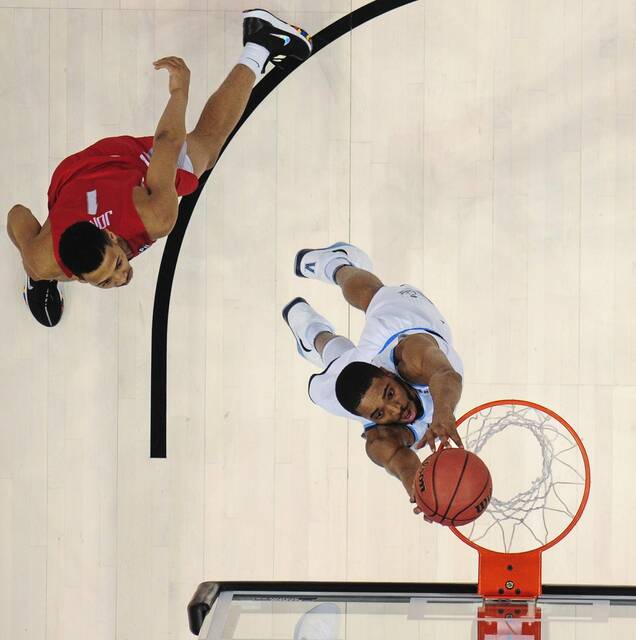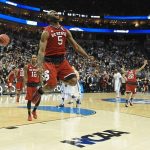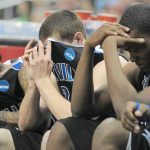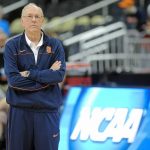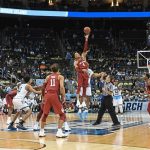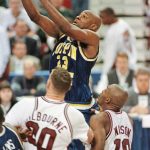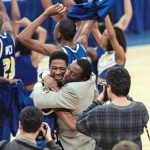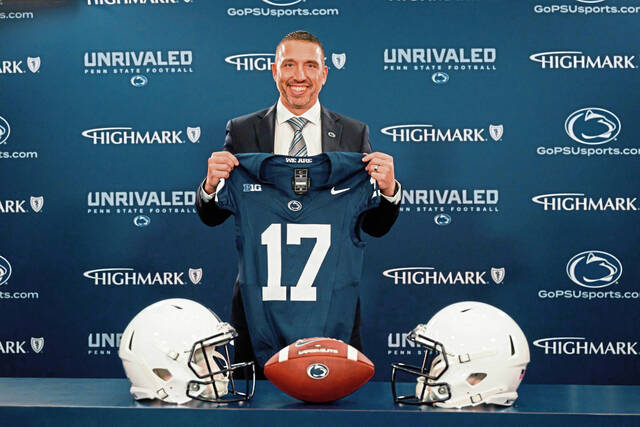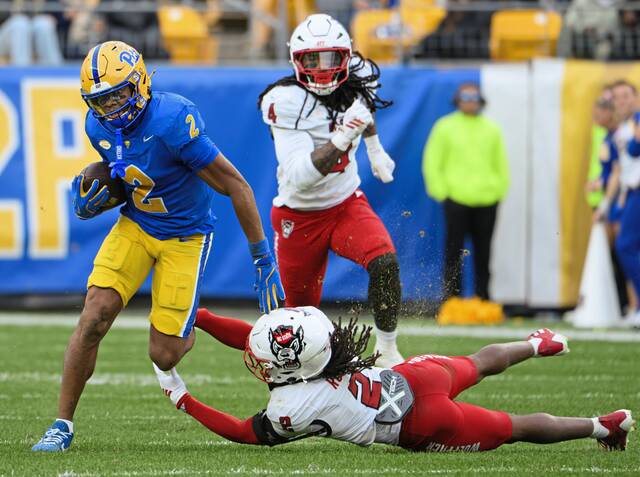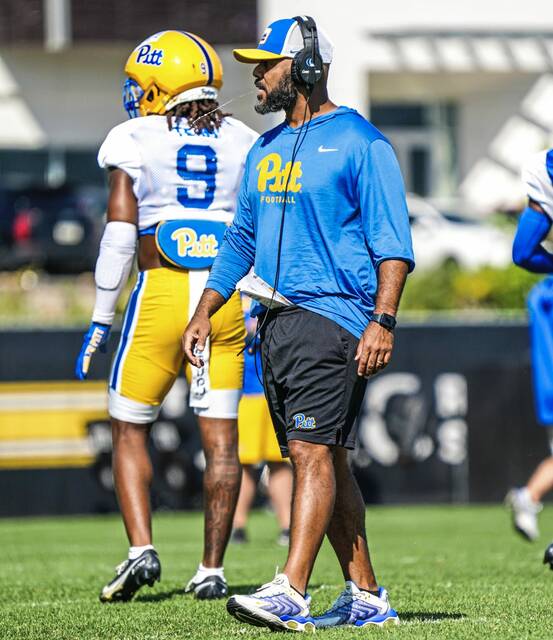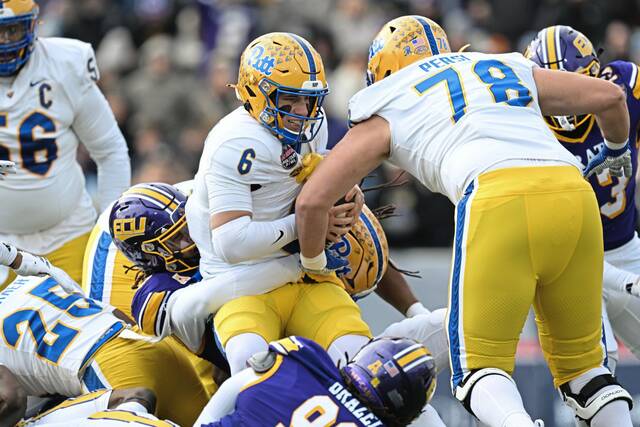Dave Saba was there the first time the NCAA Tournament came to Pittsburgh.
It was 1997, and the Civic Arena (where it all happened) was still standing. Today, that site features a big pile of dirt in an empty lot.
Then, Saba was seen as an outsider from Texas whose team was trying to derail one of the great Cinderella stories in tournament history.
The tournament’s first- and second-round games will be back in town March 18 and 20 for the sixth time, across the street from that pile of dirt at PPG Paints Arena. Eight teams will arrive from various parts of the U.S., starting the quest for the national championship of college basketball. Pittsburgh is one of eight host cities — from Portland, Ore., to Greenville, S.C. — for first-round games. Duquesne is a host institution for the sixth time (’97, ’02, ’12, ’15, ’18), with the seventh returning in 2024.
Saba and Paul Hightower, who are Duquesne’s longtime associate and senior assistant athletic directors, are the only two officials who have been intimately involved (translation: long hours at work) with all six tournaments in the city.
Meetings for this one began in July, and phone calls between Duquesne and the NCAA office in Indianapolis have been a routine fact of life for months.
Saba knows lots of people are coming, but that’s all he knows until March 13, Selection Sunday.
“In a way,” he said, “it’s like hosting a wedding with 500 people, not knowing who the guests are going to be.”
In 1997, Saba was sports information director at Texas. The field included Saba’s Longhorns and the darling of the weekend, Coppin State, a small school from Baltimore.
No. 15 seed Coppin State made history by defeating No. 2 seed South Carolina, 78-65, in a first-round game. It represented just the third time that a No. 15 beat a No. 2. Previously, no team from the Mid-Eastern Athletic Conference had won a game in the tournament.
South Carolina, ranked No. 6 in the nation, boasted three All-SEC guards and a 24-8 record. Coppin was 22-8 against a field of mainly MEAC opponents. But when Coppin forced a 34-34 tie at halftime, the crowd quickly jumped aboard and chants of “Let’s go, Eagles!” reverberated around Civic Arena.
Wonderfully named Coppin coach Fang Mitchell was not surprised at the support his team received from Pittsburghers he never had met.
“I told the team if we make the game competitive, we could get the crowd on our side because we’re the underdog,” he told the Baltimore Sun.
During most of the game, Saba was inside tending to the Texas team.
“I kept hearing these loud roars,” he said. “I got up and saw Coppin State was beating South Carolina. The whole place was going crazy.”
Coppin’s victory set up a second-round game against Texas after the 10th-seeded Longhorns defeated No. 7 Wisconsin, 71-58. Two days later, Texas ended Coppin’s dream with an 82-81 victory.
How did the Civic Arena crowd treat the Longhorns?
“We were the Cleveland Browns and Coppin was the Steelers,” Saba said.
In addition to Coppin State’s upset, two No. 8 seeds — UCLA and N.C. State — eliminated No. 1 seeds Cincinnati and Villanova — in 2002 and 2015.
Several other moments stick out from the Pittsburgh tournaments:
• In 2002, the renamed Mellon Arena was the first NCAA Tournament venue to sell out that year, Saba said. Pitt started its streak of 10 consecutive NCAA appearances and won games by double-digit margins against Central Connecticut and California.
• A Cincinnati team coached by Bob Huggins was a No. 1 seed, but the Bearcats lost to No. 8 UCLA in a second-round, double-overtime game, 105-101, in ‘02.
• Robert Morris coach Andy Toole was there, too, and scored nine points as a junior guard for Ivy League champion Penn in an 82-75 loss to California in ‘02.
• In 2012, then-Vice President Joe Biden showed up to check out his Syracuse Orange. Biden went to law school at Syracuse. “Naturally, it changed a lot of things we did because of the protocols of security,” Saba said. “Certain access routes were changed because the vice president is coming through.”
• An opening-day crowd of 19,413 — the largest for an indoor arena event in Pittsburgh history — watched the second session in 2012. Before the games, one fan caught Saba’s eye.
“I remember glancing across and seeing T.J. McConnell (then a star guard for Duquesne) watching Ohio State practice,” Saba said. “You wonder what’s going through his head. A week later, he announced he was transferring (to Arizona).”
• In 2015, No. 1 seed Villanova was upset by No. 8 N.C. State, 71-68, on the second day after President Obama picked the Wildcats to reach the championship game. Two days earlier, Villanova coach Jay Wright found little joy in defeating Lafayette, 93-52. The defeated coach, Jack O’Hanlon, was a star on Villanova’s 1970 NCAA Tournament team and is a member of the school’s Hall of Fame. Wright switched to a zone defense in an attempt to hold down the margin of victory. “We tried to do what we could to be classy about it,” he said.
• Three years later, Saba was watching the 2018 NBA Draft on TV. Five of the top 10 selections played in Pittsburgh that year — Duke’s Marvin Bagley III and Wendell Carter Jr., Oklahoma’s Trae Young, Alabama’s Collin Sexton and Mikal Bridges of Villanova, the eventual national champion.
“I remember watching the draft saying, ‘We had him. We had him. We had him.’ ”
Duquesne likes serving as host for the weekend, and not just because of the $200,000 honorarium from the NCAA.
“Nothing like walking into that arena and seeing all the brand names,” Saba said. “You knew it was something special. It’s neat to be a part of that.
“You look around, every time we host there aren’t any empty seats.”
Said Duquesne athletic director Dave Harper: “We’d much rather be playing in it than hosting it. I can tell you that much. It’s important to do both. Great for the sport. Great for the institution, the community. There’s no downside to it.”
Of course, there are long days for dozens of paid employees and volunteers, and even some scenes you hope no one notices.
When Saba saw Cincinnati star point guard Steve Logan throw a punch during a practice in 2002, he made a quick decision.
“The black curtain was open a crack,” he said, “so I subtly went over there and pulled the curtain to make sure it was completely closed.”
In his role as one of the chief organizers, Saba gets a front-row seat.
“I got to sit within 4 feet of Hall of Fame coaches (including Syracuse’s Jim Boeheim in 2012 and Duke’s Mike Krzyzewski in 2018),” he said.
Duke’s huddle during timeouts offered insight into the respect players have for Krzyzewski.
“As soon as they get there, it’s dead silence and one person speaks,” he said. “It’s neat to be a fly on the wall and watch guys interact with their teams.”




